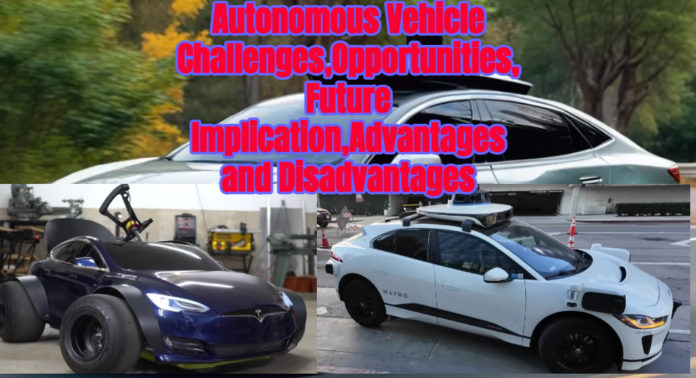Autonomous vehicles are the new revolution in driving technology. An autonomous vehicle conducts itself using dynamic sensors in place and, further, with the use of machine learning technology and artificial intelligence to drive and operate its course without human interference. With the advance in autonomous vehicle technologies, it is the dawn that will turn the way people travel into a safe, efficient, and accessible way.
Autonomous vehicles are a very appealing idea to the public and even industry experts, and this. Therefore, there was a debate about whether it might change the whole face of the transport system. They have a myriad of promises, but the full adoption journey is coupled with immense challenges to be met.
History and Origin
Early ideas on autonomous driving can be traced back to the middle of the 20th century, when the first experiments on automated systems started to be done. The first seriously developed, working prototype hit the ground running in the 1980s, when Carnegie Mellon University’s Navlab began to produce a self-driving vehicle. Since that time, the technologies of companies such as Google and Automotive, along with those of large technical and automobile giants like Tesla, have increasingly been refined to bring the idea of fully autonomous vehicles sharply into view.
Also read: Humanoid Robots: The Future of Autonomous Driving?
Challenges
Besides these promising advances, other challenges remain on the long path ahead. The development of strong safety measures and a regulatory framework for robotic cars. The ethical consequences of algorithms that make decisions and the integration of autonomous cars into the existing infrastructure. Are some of the most important ones that must be solved by officials. Overcoming them is essential in order to adopt the technology.
Opportunities
Autonomous vehicles offer tremendous opportunities, ranging from the reduction of accident rates from human errors on the road to providing mobility solutions for the elderly and disabled. All this, in turn, will revolutionize and modernize the complete system of logistic and delivery services for greater efficiency and cost reduction.
Future Implications
Nevertheless, self-driving cars promise a future of potential disruption. They could bring major changes in urban planning toward much less parking space and more fluid traffic. It also undermines such business areas as insurance, public transport, and traditional auto manufacturing in many ways.
Advantages and Disadvantages
Advantages
- Safety: Hence, human driving can be a source of danger. Therefore, it will be easy to reduce that matter, possibly cutting accidents.
- Efficiency: Traffic flow thereby is lightened and fuel utilization is optimized.
- Accessibility: More accessible to people who are unable to drive.
Disadvantages
- Cost: High capital costs in terms of technology and infrastructure.
- Job Displacement: Loss of jobs in driving-related industries.
- Ethical issues: difficulty in programming algorithms for the decision-making process.
Impacts
The implications of autonomous cars will not only stop in the transportation sector. They may impact the environment in terms of emission reductions, the economies in terms of job markets, and even how social behaviors work.
Autonomous vehicles are a critical turning point in transportation. Although a full transformation towards the adoption of this technology is still posed by heavy challenges,. The potential benefits make this technology a name to reckon with in the future. As enhancement keeps flowing, a steady balance among innovation, regulation, and social impact is imperative if truly fulfilling the potential of autonomous vehicles is to be realized.
Frequently Asked Questions (FAQs)
1. What is an autonomous vehicle?
An autonomous vehicle can drive itself with little or no human input by employing instrumentation such as sensors, AI, and others.
2. What are the advantages posed by autonomous vehicles?
Benefits are related to safety, efficiency, and accessibility.
3. What are the challenges posed by autonomous vehicles?
The challenges are safety, regulation, ethics, and infrastructure integration.

